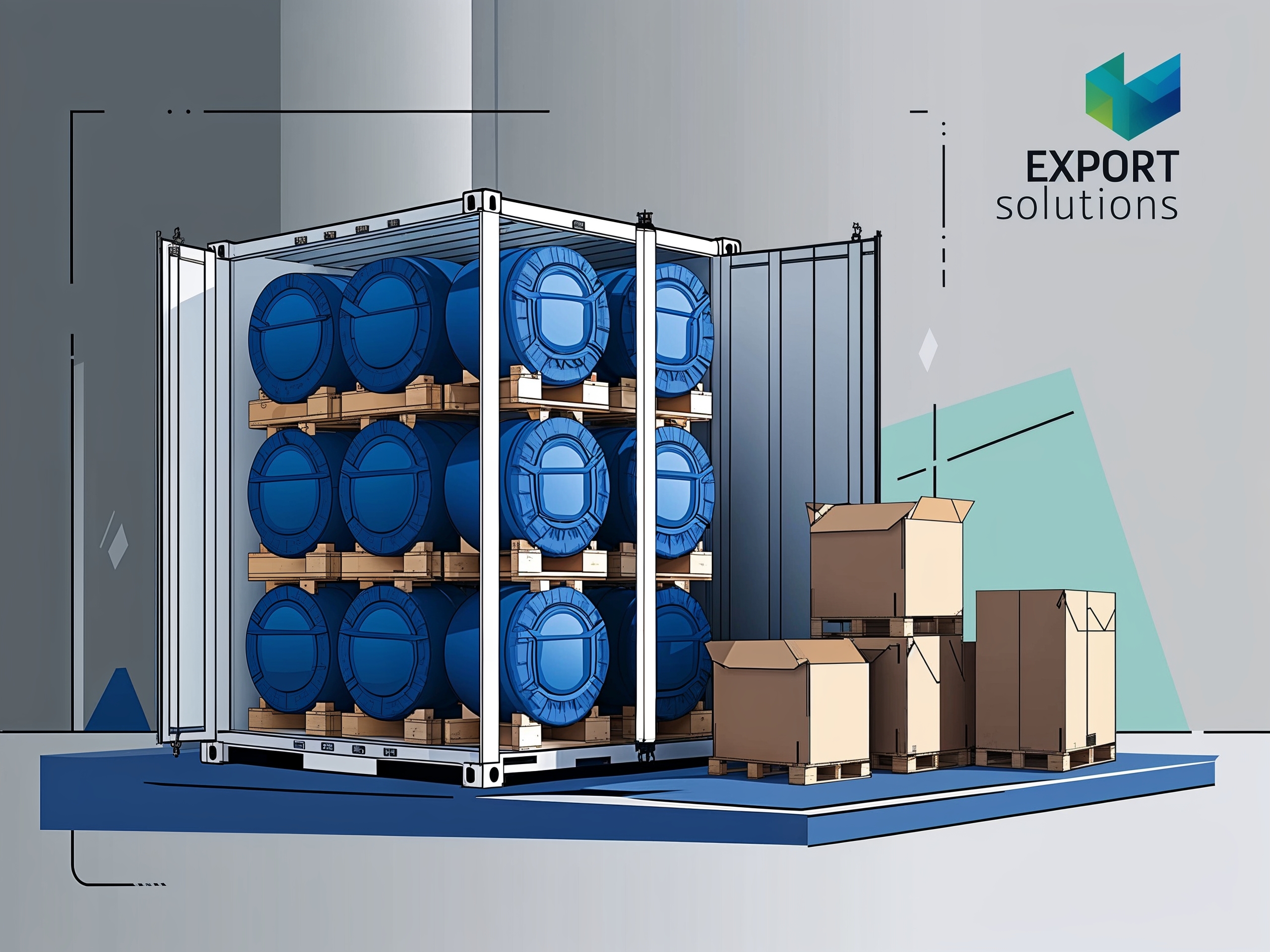Introduction
Bitumen is a critical material used worldwide in road construction, waterproofing, and industrial applications. As demand for bitumen continues to rise globally, exporters must adopt cost-effective packaging solutions to ensure safe, efficient, and economical transportation. Choosing the right packaging not only preserves the quality of bitumen but also minimizes logistics costs, reduces waste, and meets international shipping standards.
In this comprehensive guide, we will explore the most cost-effective bitumen packaging options available for exporters, key factors to consider when selecting packaging solutions, and best practices to optimize cost efficiency in bitumen transportation.
Importance of Choosing the Right Bitumen Packaging for Export
Proper bitumen packaging is essential for several reasons:
- Preservation of Product Integrity: Ensures bitumen remains free from contamination and retains its original properties during transport.
- Cost Reduction: Efficient packaging minimizes handling, transportation, and storage costs.
- Regulatory Compliance: Adhering to international packaging and shipping standards prevents legal issues and penalties.
- Ease of Handling: Packaging solutions should allow for seamless loading, unloading, and transportation.
- Environmental Considerations: Sustainable packaging solutions help reduce waste and the environmental footprint.
Factors to Consider When Choosing Bitumen Packaging
Selecting the right packaging solution for bitumen export requires careful consideration of several key factors:
- Volume and Quantity Requirements:
- Larger quantities may require bulk storage options, while smaller shipments can be packaged in drums or bags.
- Shipping Distance and Conditions:
- Long-distance shipping requires durable packaging solutions that can withstand varying temperatures and handling conditions.
- Handling and Storage Capabilities:
- Ease of loading and unloading affects operational efficiency and cost savings.
- Regulatory Standards:
- Packaging must comply with industry standards such as ISO 9001 and shipping guidelines from bodies like IMO (International Maritime Organization).
- Budget Constraints:
- Exporters should balance between initial packaging investment and long-term operational cost savings.
Cost-Effective Bitumen Packaging Options
Below are some of the most widely used and cost-effective bitumen packaging solutions available for exporters:
1. Bulk Bitumen Tankers
Bulk bitumen tankers are a popular choice for exporting large volumes of bitumen in liquid form.
Advantages:
- High Efficiency: Reduces packaging costs by eliminating the need for additional containers.
- Temperature Control: Tankers are equipped with heating systems to maintain bitumen viscosity.
- Reduced Handling Costs: Streamlined loading and unloading processes save labor and time.
Disadvantages:
- High Initial Investment: Purchasing or renting tankers requires a significant upfront cost.
- Limited Flexibility: Tankers are only suitable for large-scale exports.
Best For: Large-scale exporters shipping bulk quantities over long distances.
2. Bitumen Drums
Drums, typically made from steel, are one of the most traditional and widely used bitumen packaging methods.
Advantages:
- Affordability: Relatively low initial cost compared to tankers.
- Portability: Easy to transport and store in smaller quantities.
- Reusability: Drums can be recycled and reused for future shipments.
Disadvantages:
- Labor-Intensive: Requires manual handling and storage space.
- Limited Volume: Not suitable for large-scale shipments.
Best For: Small to medium exporters requiring flexible shipping options.
3. Jumbo Bags (Polycube Packaging)
Jumbo bags, also known as polycube bags, provide an innovative solution for solid bitumen transportation.
Advantages:
- Lightweight and Flexible: Easier to handle compared to drums.
- Cost-Efficient: Lower transportation and storage costs.
- Eco-Friendly: Reusable and recyclable, reducing environmental impact.
Disadvantages:
- Limited Capacity: Not ideal for very large shipments.
- Requires Heating: Solid bitumen must be reheated before application.
Best For: Medium-sized exporters looking for cost-effective and eco-friendly solutions.
4. Flexitanks
Flexitanks are flexible, multi-layered bags that fit inside standard shipping containers and are used to transport liquid bitumen.
Advantages:
- Low Packaging Costs: Eliminates the need for rigid containers.
- Reduced Contamination Risks: Single-use design ensures product purity.
- Efficient Space Utilization: Maximizes container capacity, leading to lower shipping costs.
Disadvantages:
- Single Use: Typically not reusable, leading to higher waste generation.
- Handling Sensitivity: Requires careful loading and unloading to prevent leaks.
Best For: Exporters looking for flexible and cost-saving shipping solutions.
5. Bitutainers (ISO Tank Containers)
Bitutainers, or ISO tank containers, are specialized containers designed for safe and efficient bitumen transportation.
Advantages:
- Standardized Design: Ensures compatibility with international shipping standards.
- Long-Term Durability: Provides excellent protection against external conditions.
- Temperature Control: Built-in heating elements maintain bitumen temperature.
Disadvantages:
- Higher Costs: More expensive than flexitanks or drums.
- Logistics Challenges: Requires specialized equipment for loading and unloading.
Best For: Exporters seeking reliable, long-term shipping solutions for bulk transport.
Comparing Bitumen Packaging Solutions
| Packaging Type | Cost Efficiency | Storage Capacity | Ease of Handling | Environmental Impact |
|---|---|---|---|---|
| Bulk Tankers | High | Large | Moderate | Moderate |
| Drums | Moderate | Small to Medium | High | High |
| Jumbo Bags | High | Medium | Moderate | High |
| Flexitanks | Very High | Large | High | Moderate |
| Bitutainers | Moderate | Large | Low | Low |
Best Practices for Cost-Effective Bitumen Packaging
To optimize cost-effectiveness when exporting bitumen, consider the following best practices:
- Optimize Packaging Size: Use the right packaging size to minimize waste and reduce shipping costs.
- Choose Sustainable Options: Opt for recyclable and reusable packaging materials to cut long-term expenses.
- Invest in Quality Control: Properly inspect packaging before shipment to avoid leakage or product loss.
- Plan Logistics Efficiently: Partner with reliable logistics providers to optimize transportation routes and schedules.
- Stay Compliant: Ensure all packaging methods adhere to international standards to avoid regulatory fines.
Environmental Considerations in Bitumen Packaging
As environmental awareness grows, exporters must consider packaging solutions that reduce their carbon footprint. Strategies to achieve this include:
- Using recyclable drums and bags to minimize waste.
- Opting for energy-efficient tankers with advanced heating systems.
- Implementing a closed-loop packaging system to reuse containers where possible.
- Reducing solvent-based packaging options in favor of eco-friendly alternatives.
Conclusion
Choosing the right bitumen packaging solution is crucial for maintaining product quality, optimizing logistics, and reducing costs for exporters. Each packaging method—whether bulk tankers, drums, flexitanks, or bitutainers—has its unique benefits and challenges. By carefully assessing project requirements and budget constraints, exporters can select the most cost-effective option that aligns with their operational goals.
Call to Action
At Riyoniz, we offer a wide range of cost-effective bitumen packaging solutions tailored to meet the specific needs of exporters. Our packaging options ensure product integrity, cost savings, and compliance with global standards. Contact us today to explore the best packaging options for your bitumen exports.






